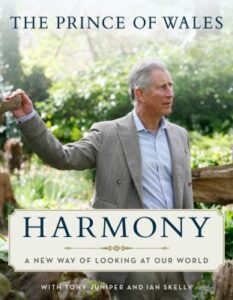By Ross Thrasher
The newly crowned King Charles III is facing a different world from that of his mother at her coronation 70 years ago. The royal family is an artifact of Britain’s colonial past, and many Commonwealth countries are now detaching themselves from that legacy of slavery and exploitation. Moreover, the expense of maintaining the Windsors with their vast properties and their army of servants seems obscene as the UK economy declines in the 2020s.
A recent article by Will Lloyd in the New Statesman magazine (5-11 May 2023) entitled “What lies beneath the crown” (pp. 22-28) unveils a little-known aspect of King Charles’ biography. He has long been visible as an environmentalist. For decades “he warned about climate change; he condemned aerosols; he lamented the illegal methods used to catch the Patagonian toothfish … Initially, all these opinions earned him a reputation as a crank.” Nowadays, of course, the world has caught up to Charles’ green message.
 But the author explains that the King’s true sensibility “is darker and stranger than that”. His philosophy is that of a Traditionalist, as articulated in his 2010 manifesto Harmony, which was downplayed by the royals and unread by most people.
But the author explains that the King’s true sensibility “is darker and stranger than that”. His philosophy is that of a Traditionalist, as articulated in his 2010 manifesto Harmony, which was downplayed by the royals and unread by most people.
Traditionalism replaces the idea of “progress’ with a deep sense of decline. “The great experiment,” Charles writes in Harmony, “to stand apart from the rest of creation has failed.” Our age believes in advancing living standards and social justice. It replaces sacred rituals with spreadsheets…. The Traditionalist mind revolts against this. Timeless values take precedence over false progress…. [And now] the King’s Traditionalist conviction that civilization is in terminal decline has become widely held. Climate change looks like the ultimate indictment of a society that has fetishised economic growth over “Nature’s necessary limits”, as Charles puts it in Harmony.
Lloyd implies that these ideas emerged out of Charles’ unhappy childhood and later, his embarrassments at the hands of the British tabloids. He had always taken refuge in the solitude of nature. Back in the 1990s Prince Charles had visited Romania, where the Windsors had some distant family connections. He discovered a quasi-medieval culture in “Saxon Transylvania [which] existed outside the stream of European modernity…. Somehow, the Britain of his ancestors lived on, physically and psychologically, in this forgotten corner of Transylvania.” Flora and fauna that had been destroyed by development in the UK still flourished here. “This country was a nostalgic fantasy made real.”
Charles bought properties in two Romanian villages, Viscri and Zalanpatak, and visited them on his own every year thereafter. He wandered in the pristine woods and pastures. He made a deep connection with the locals, aiding their communities financially while helping to preserve their medieval simplicity. Ironically, however, in recent years Viscri has become a magnet for ecotourism, a “feudal Disneyland” whose residents are now abandoning their traditional lifestyles.
Now that he is on the throne, it remains to be seen whether King Charles will be able to continue his love affair with Transylvania, and how he might implement his Traditionalist philosophy at home in Britain.
See what else we have in GTEC’s Communication & Media (formally GTEC Blog)! Read articles on climate change, sustainability, education, and more!

